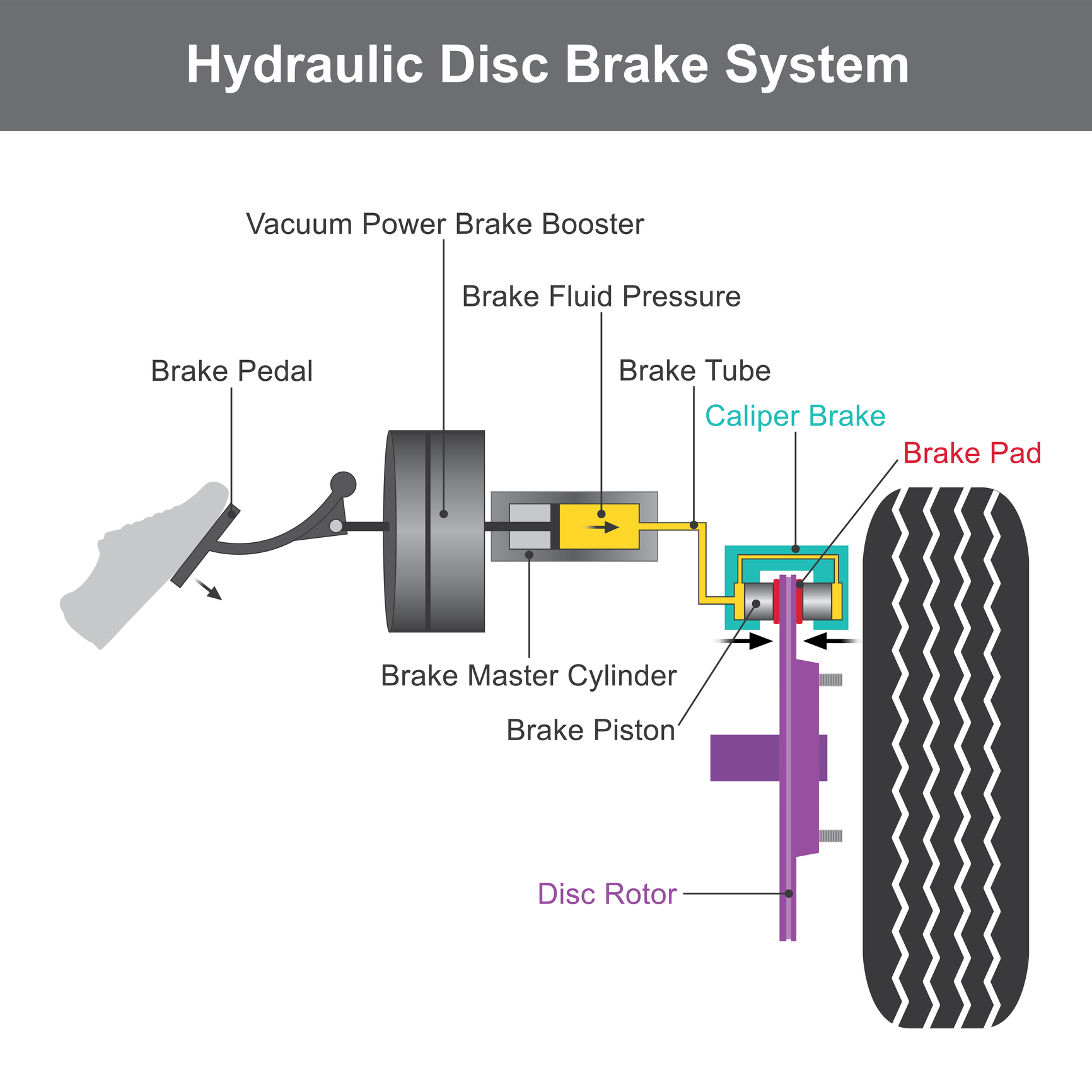Brake Maintenance
So much science goes into stopping a vehicle.
There's physics (momentum, inertia, friction) and mechanical engineering (fluid mechanics, simple and complex machines).
Here we'll explain components commonly found in the brake system of passenger vehicles, without getting too granular about ALL the science involved.
But first, the basics.
How often should I have my brakes inspected or repaired?
For starters, stick with the service schedule outlined in your vehicle manual. At least one brake inspection/service per year is highly recommended. Brakes aren't something to put off. Squealing, vibration during deceleration, and a spongy brake pedal all require immediate attention. Such symptoms often lead to more expensive repairs when left untreated.
What's involved with a brake inspection?
Trained technicians inspect all aspects of your vehicle's stopping system for leaks, wear, and damaged components. Each individual test is often known as a "point" within a multipoint inspection. The number of points in an inspection may vary from shop to shop, but what they observe remains largely the same.
What are the benefits of brake repair and brake maintenance?
Brake repair is a vital safety issue. Without properly working brakes, normal driving situations would take a turn for the worst. However, there are other benefits in getting routine brake service and brake repair. Changing your brake pads, when needed, saves wear on your rotors, which translates into less money spent down the line.
Below is a glossary and outline of basic brake components.
*Brake fluid. Stopping a car depends on hydraulics, and brake fluid is literally the system’s lifeblood. Pushing the pedal forces fluid through the lines, causing components to expand against the wheels, stopping the vehicle.
How often your brake fluid needs to be replaced depends on a number of factors, such as your driving habits and environmental variables like heat and humidity. Most vehicles don’t offer gauges or sensors to track brake fluid. So having your fluid inspected by a certified auto mechanic is crucial.
“Brake fluid is the most important fluid in a car and probably the most ignored,” said Tony Molla, vice president of the Automotive Service Association.
*Brake pads. Made from a variety of metals, brake pads squeeze the rotor whenever the brake pedal is pushed. Brake pads typically last between 20,000 and 40,000 miles, perhaps much longer with high quality brake pads.
But even if you aren’t watching the odometer closely, brake pads are designed to alert drivers when they’re wearing thin.
A small metal piece pings or “chirps” when it makes contact against the brake disc. Warning: Listen for that squealing, otherwise you could do serious damage to your brakes. Paying attention to and acting on cues like these help keep routine services from mutating into major repairs.
*Calipers. Part of a disc brake system, calipers push the brake pads against the rotors when the brake pedal is pushed. This resulting friction between the pads and rotors slows--and ultimately stops--the vehicle.
Waiting too long to replace worn brake rotors puts extra stress on the calipers. The calipers will rub against uneven rotors if the components aren’t parallel to one another, creating a vibration that can be felt in the steering wheel during stops.
*Drums. These bowl-shaped components use springs to expand the brake pads against the inside of the drum. This style of brakes is typically found on the rear of trucks or sedans. While it produces brake dust, the majority of it hides behind the covering, which means less gunk on your rims.
The brake drum is typically made of cast iron that conducts heat and is resistant to wear. So why are drum brakes usually found on the rear wheels?
“Drum brakes are cheaper and take less hydraulic force to activate. When you stop your car most of the braking is done by the front brakes because of weight transfer--why you feel pressed towards the front when you hit the brakes,” said Nathan Kaemingk, a technical specialist for Cummins, Inc. “[Drum brakes] are more susceptible to warping and brake fade. They're worse at cooling, and more likely to need cleaning and adjustment for optimal operation than disc brakes because a lot of the dust from brake shoes stays inside the drum.”
*Rotors. As the name implies, these metallic discs rotate as the wheels are in motion. Rotors sit behind the wheel assembly and can sometimes be seen through the vehicle’s rims. Pressing the brake pedal activates clamps on both sides of the rotor.
Friction created during braking produces searing heat that eventually scars the rotors. While they can be resurfaced, rotors eventually reach a point where replacement is the only option.
Rotors should be checked during a tire rotation or multipoint inspection.
Anthony Belcher, Sensible Driver's Service & Parts Reporter, contributed to this writeup.
